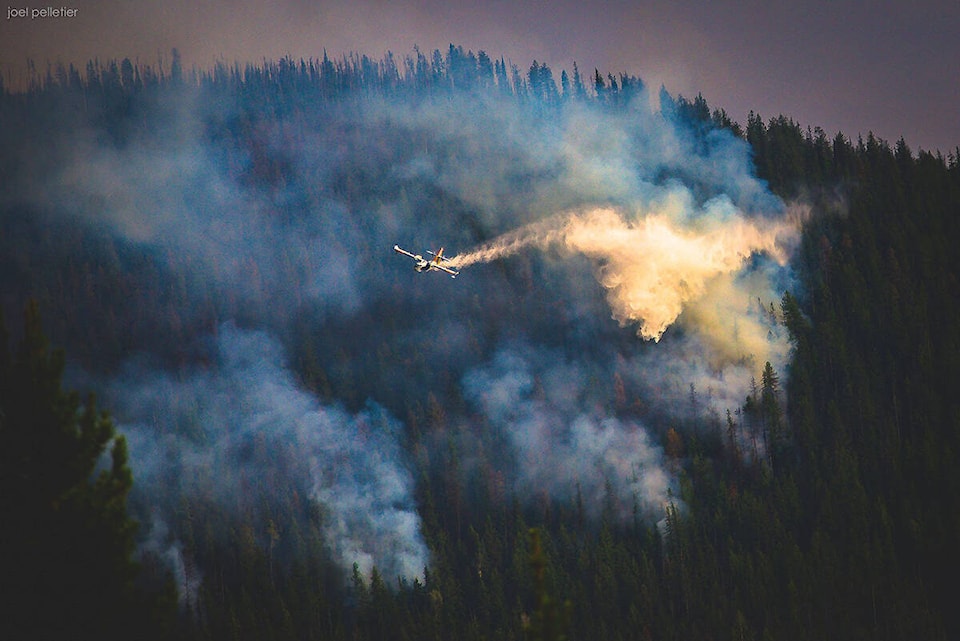by John Boivin
Local Journalism Initiative Reporter, Valley Voice
A report looking into hazards created by last summer’s Trozzo Creek fire says the danger to Slocan Valley residents in the area is low – but people travelling into the backcountry or living adjacent to streams should keep a watchful eye in years to come.
“In the Trozzo Fire, debris flow and flood hazards exist both due to short-duration, high-intensity, rainfall events and snowmelt-caused events,” says a report released recently by consultants for the Ministry of Forests, Lands, and Natural Resource Operations.
However, the risk is relatively low overall.
The Trozzo wildfire started on July 9, 2021, and burned 5,992 hectares within the Lemon Creek, Trozzo Creek, Winlaw Creek and Grohman Creek drainages, about eight kilometres from Winlaw. The fire forced hundreds of people out of their homes for several days as flames spread quickly in the record summer heatwave.
While no homes or structures were destroyed, a risk assessment was done this fall because of how the fire burned upstream and uphill from residential areas – increasing the danger posed by flooding or debris events. Forest fires can affect how well the soil absorbs water, while the loss of vegetation can undermine or weaken steeper slopes. That can make mud and debris slides more likely.
Heavily burned areas can create problems for water quality as well, and the report recommends the creation of a regular water testing program for the area.
“Water quality could be affected by modified run-off conditions including changes to turbidity, biological contamination, flows (quantity and timing), and metal concentrations,” it says. “It is recommended that a suitable water quality testing program be established on Lemon Creek, Trozzo Creek, and Winlaw Creek to assess and evaluate water quality.”
The good news is the fire didn’t burn as hot as feared in many areas, reducing the possible problems.
“The overall burn severity within the Lemon Creek and Winlaw Creek drainages is low,” states the report. “It is unlikely that flooding will occur over these fans due only to post wildfire effects.”
However, the authors go on to say that “it is possible that landslides will occur in the [Lemon Creek drainage] and [Winlaw Creek drainage] that could result in temporary blockages of the creeks resulting in debris floods.”
Trozzo concerns
Of greater risk of problems is Trozzo Creek, which had higher overall burn severity (30 per cent moderate and 10 per cent high) than Lemon Creek (six per cent moderate, two per cent high) or Winlaw Creek (12 per cent moderate, two per cent high).
It had more highly-burned tributaries on steep slopes that could cause blockages. While that’s a concern to keep an eye on, the problems will likely be more than five kilometres upstream from the creek’s fan.
“The likelihood of flooding and/or debris floods is considered low to moderate,” the report says, though it notes culverts along Highway 6 (especially Winlaw Creek), forest service roads in the high country, and some houses in the fan areas could be affected. It recommends backcountry roads, bridges and drainage infrastructure be regularly inspected and have an increased maintenance schedule.
The report also recommends against harvesting wood from the burned areas, a common practice after a forest fire.
“Salvage harvesting of burned areas has the potential to increase the associated hazards and risks associated with flooding and landslides,” it says. “It is recommended that no salvage harvesting take place within the drainages where there is a Moderate or High likelihood of post wildfire landslide or flooding hazards.”
Electronic copies of the report should be sent to residents along the affected creeks.
And during freshet and heavy rainstorms, “residents should be diligent with regards to work/travel adjacent to the local creeks and be aware of any sudden changes to creek flows…” it says. “Residents should familiarize themselves with the creeks, their location relative to the creeks, and where damages would be sustained if flooding were to occur.”
“If changes are observed, they should be reported promptly to Emergency Management BC,” it adds.
